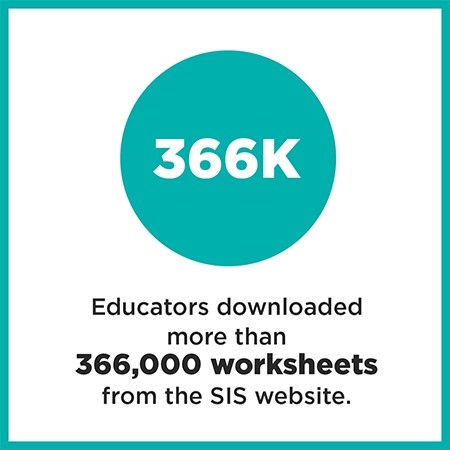
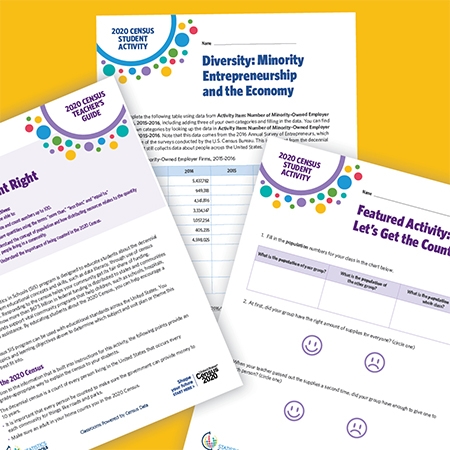
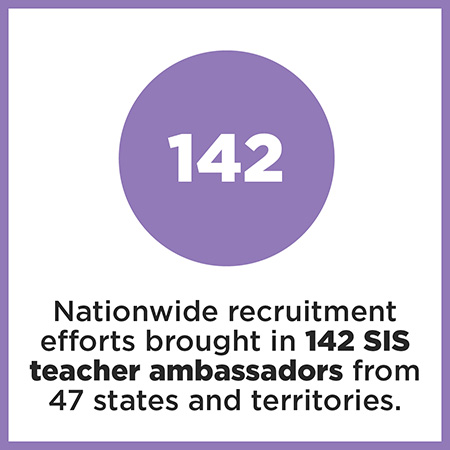
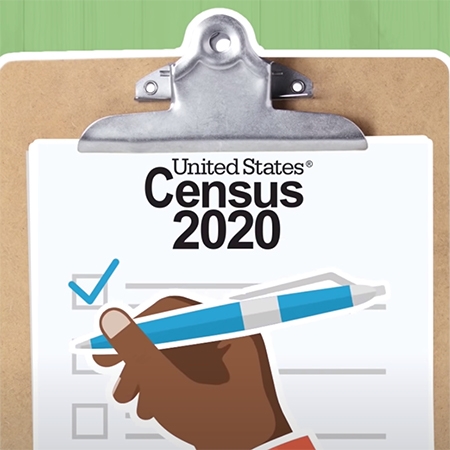
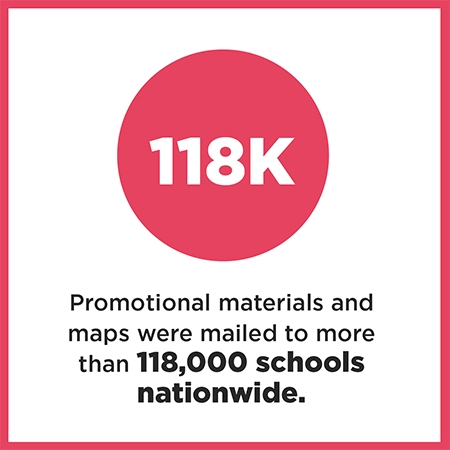

Counting everyone once, only once, and in the right place: That was the goal of the 2020 Census. The biggest challenge was how to reach hard-to-count populations — including people from racial and ethnic minority groups, non-English speakers, and people in low-income households — to make sure they were included. It was also important to reach households with children under age 5, to support the Census Bureau’s work improving the count of young children.
K-12 classrooms offered an important pathway to reach these populations. School-age children can be instrumental in encouraging the adults at home to respond to the census. One of the most effective ways to reach children is through their teachers, who can deliver stimulating, educational classroom exercises that underscore the value of census data to everyone living in the U.S. Those teachers also can convey important messages directly to students’ households.
That’s why the U.S. Census Bureau decided to use its Statistics in Schools (SIS) program to persuade adults with children to complete the 2020 Census and provide guidance for completing it correctly.
Reingold and its collaborators assembled a team of educators and education consultants to craft engaging SIS classroom activities — turnkey materials that make it easy to teach students about the application and value of census data in daily life. We used digital marketing to increase awareness of the SIS program among educators and parents, recruited and equipped teacher ambassadors and national partners to promote the use of SIS in classrooms, planned and organized national events, pitched SIS to the media, and created more than 300 new promotional items and educational materials related to the 2020 Census. Additionally, this effort was part of the 2020 Census Shape Your Future campaign that won the 2020 Gold Effie, one of the marketing industry’s highest accolades.






To create SIS activities and materials that speak authentically to hard-to-count populations, Reingold worked closely with Census Bureau experts and agency partners representing Asian American, Black, Latino, Native American, and Pacific Islander populations. These agencies brought great subject matter expertise in reaching and engaging diverse populations. This collaboration extended to all campaign components, including classroom resources, digital ads, videos, events, social media posts, outreach strategies, promotional items, and public service announcements.
Statistics in Schools’ commitment to representation and diversity across all resources showed up in ways big and small — as broad as the inclusion of people from many different backgrounds in illustrations and as detailed as the traditional Pacific Islander tattoos on the legs of a child illustrated in a preschooler story and activity book. For Spanish-speaking audiences, we did more than translate English words into Spanish; we hired teachers working in Spanish-language classrooms and worked with Latino agency partners to make the messaging and content accessible and culturally relevant to each distinct audience.
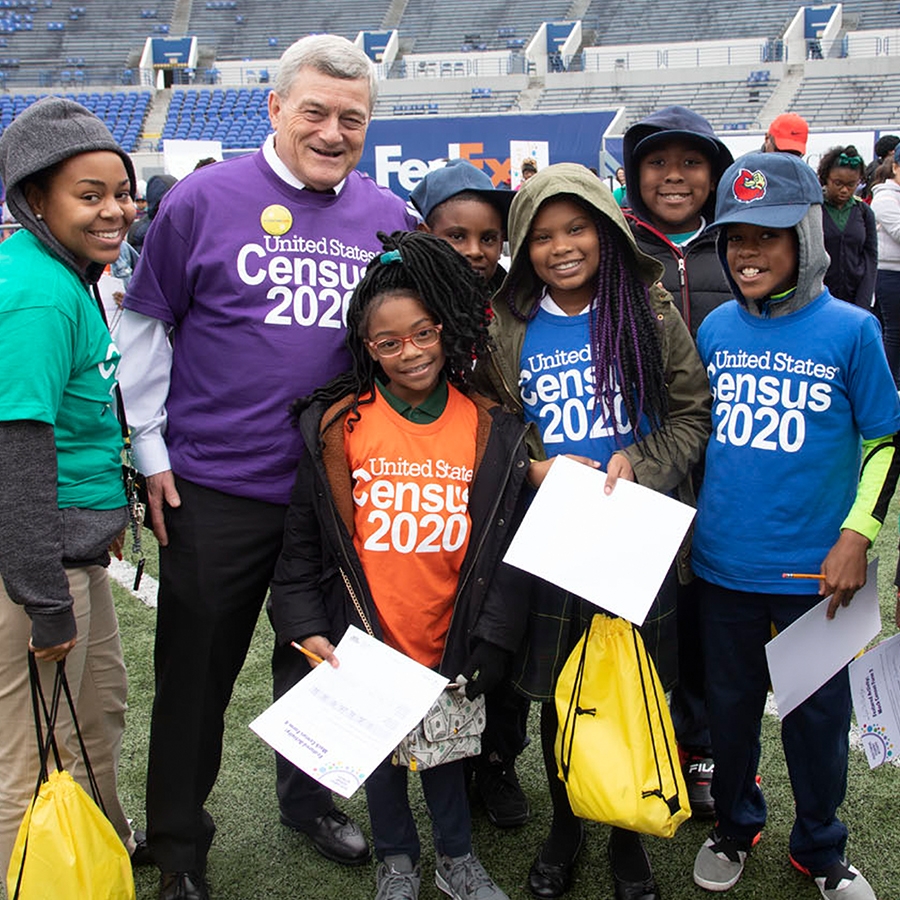

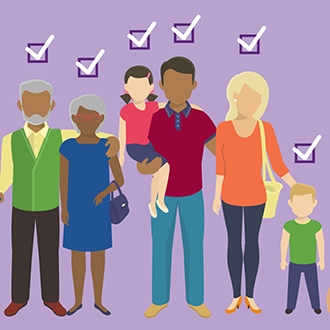


The Census Bureau estimates that 1 million children under age 5 were not counted in the 2010 Census, so the 2020 communications campaign placed a special emphasis on reaching parents and other adults living with young children. We poured our creativity into materials that appeal to preschoolers and their caregivers while delivering important messages about the census: a storybook filled with fun activities, playful rhymes, and a colorfully drawn cast of diverse characters; a catchy, spirited song that let children know that “everyone counts in their own special way”; and a series of webisodes narrated by C.B., the Census Bureau butterfly.
In all of these, we incorporated messages that underscored the importance of counting the types of people often missed in the census, including newborn babies and extended family members or non-relatives living in the same home.
To meet educators where they were — online — we focused our digital marketing efforts on social media and email, as well as on the education-focused websites they visit most frequently. Research showing how, where, and when educators, parents, and other key audiences use social media platforms helped guide our strategy. For example, Reingold revived the Census Bureau Pinterest page to connect with Pinterest’s growing teacher base.
We integrated paid digital advertising, organic social media outreach, and posts on the Census Bureau’s owned digital properties to gain traction and maximize impact. For example, a paid ad might drive audiences to the census.gov/schools website, boost a social media theme, or drive audiences to sign up for the SIS email list.
Paid digital advertisements garnered nearly 80 million impressions, generated more than 536,000 visits to the SIS website, and grew the program’s email subscription list by 25%.
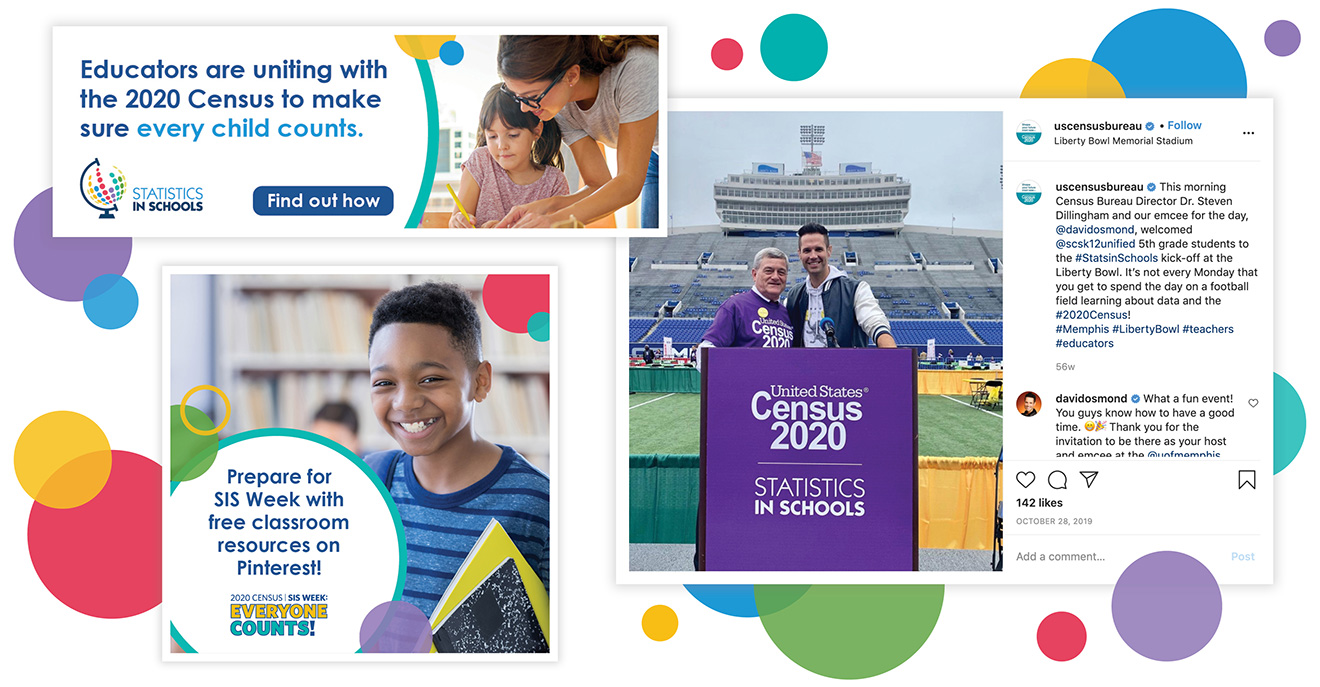
Reingold helped the Census Bureau plan and carry out three national events, including a 2020 SIS program kickoff at the historic Liberty Bowl Memorial Stadium in Memphis, Tennessee, that drew national coverage by The Associated Press. Held in Memphis because of its large population of hard-to-count audiences, the “Everyone Counts! Fall Festival” featured 1,000 local fifth grade students from 20 elementary schools.
The Reingold-led team selected the city for the event, conceived the “field day” theme, crafted key messages, provided talking points for keynote speakers, helped recruit more than 150 volunteers and staff, designed promotional items for distribution to participants, coordinated event-related social media and email marketing activities, and pitched the event to national media. The AP story was reposted by 153 outlets — including The Washington Post, U.S. News & World Report, and Yahoo — and SIS website visits and classroom material downloads increased by about 30% that week.
Reingold led the recruitment, hiring, and onboarding of 30 teachers and subject matter experts from across the country to help create and review educational materials for students at all levels. We enlisted agency partners representing Asian American, Black, Latino, Native American, and Pacific Islander populations to help create key messages, brainstorm ideas, and review materials to ensure that they reflected student diversity and were culturally relevant. Our team produced 67 student worksheets and accompanying teacher guides, 10 colorful classroom wall maps that showcase census data, and videos for different grade levels. We also produced a flyer in 14 languages about the importance of responding to the 2020 Census, for teachers to send to adults in their students’ homes.
Because most teachers look for lessons and materials online, the SIS website had to be clearly organized and user-friendly. Reingold redesigned the homepage, added a section for 2020 Census materials, created or adjusted more than 270 webpages, and incorporated keywords into content to raise the site’s visibility in search engine results. With promotional efforts resulting in nearly 1.6 million visits to the site, this redesign proved critical for educating visitors about the 2020 Census, driving downloads of classroom material, and fulfilling the campaign’s mission.